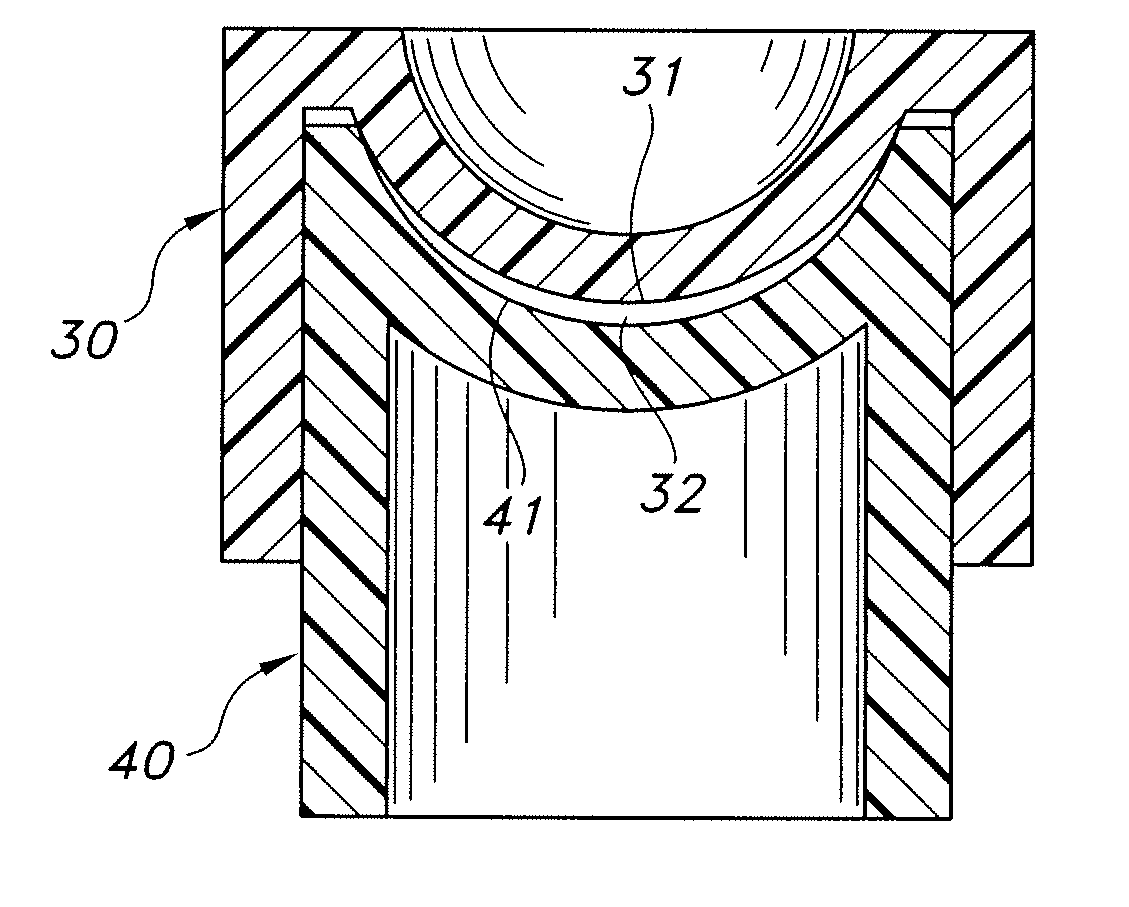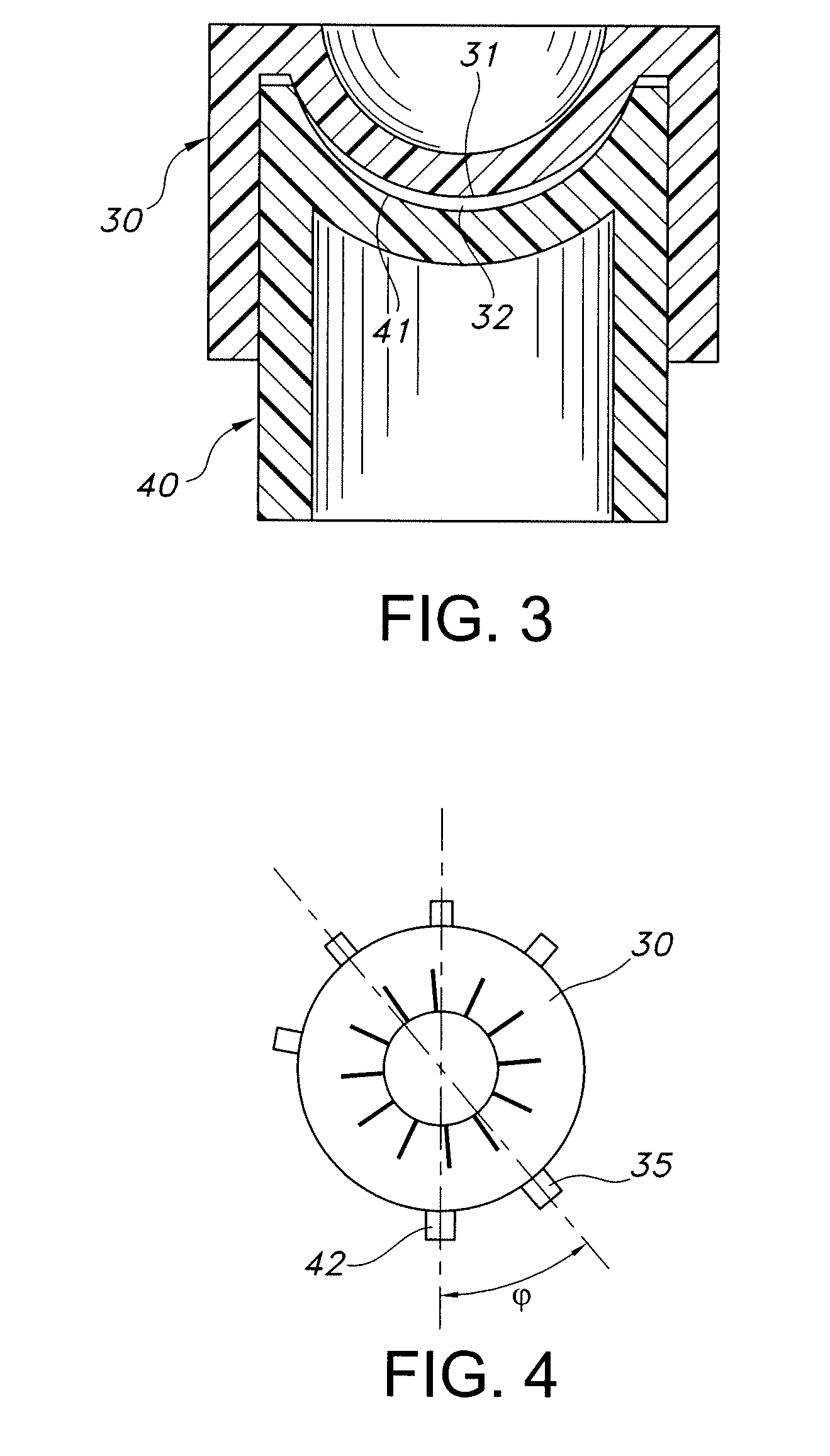Method and System of Measuring Toric Lens Axis Angle
a toric lens and axis angle technology, applied in the direction of optical axis determination, optical apparatus testing, instruments, etc., can solve the problems of increased cycle time, extra step, cycle time, etc., and achieve the effect of reducing the cycle time of inspection algorithm and cost efficien
- Summary
- Abstract
- Description
- Claims
- Application Information
AI Technical Summary
Benefits of technology
Problems solved by technology
Method used
Image
Examples
Embodiment Construction
[0032]FIG. 1 schematically illustrates a representative toric contact lens 1 that may be produced herein. Central zone 11 of posterior surface 3 is toric, i.e., this zone has a toric surface that provides the desired cylindrical correction. Posterior surface 3 may optionally include at least one peripheral curve 12 surrounding the central toric zone 11. For the described embodiment, central zone 21 of anterior surface 4 is spherical, and the spherical curve is matched with central zone 11 to provide the desired spherical correction to the lens. Anterior surface 4 may optionally include at least one peripheral curve 22 surrounding central zone 21.
[0033]Lens 1 is provided with a ballast so that the lens maintains a desired rotational orientation on the eye. For example, as schematically shown in FIG. 1, peripheral section 51 may have a different thickness than an opposed peripheral section 52 of the lens periphery. As is known in the art, the ballast is oriented about an axis, and tor...
PUM
| Property | Measurement | Unit |
|---|---|---|
| Angle | aaaaa | aaaaa |
| Angle | aaaaa | aaaaa |
| Angle | aaaaa | aaaaa |
Abstract
Description
Claims
Application Information
 Login to View More
Login to View More - R&D
- Intellectual Property
- Life Sciences
- Materials
- Tech Scout
- Unparalleled Data Quality
- Higher Quality Content
- 60% Fewer Hallucinations
Browse by: Latest US Patents, China's latest patents, Technical Efficacy Thesaurus, Application Domain, Technology Topic, Popular Technical Reports.
© 2025 PatSnap. All rights reserved.Legal|Privacy policy|Modern Slavery Act Transparency Statement|Sitemap|About US| Contact US: help@patsnap.com



